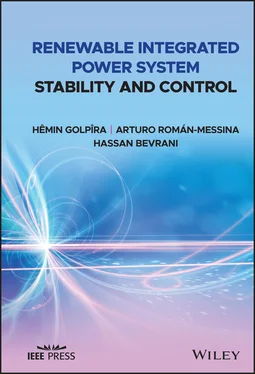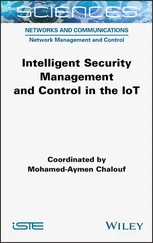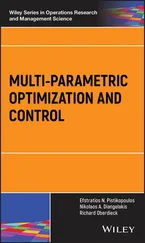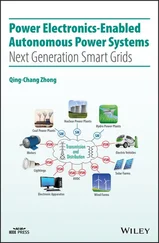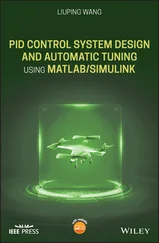Editorial Office 111 River Street, Hoboken, NJ 07030, USA
For details of our global editorial offices, customer services, and more information about Wiley products visit us at www.wiley.com.
Wiley also publishes its books in a variety of electronic formats and by print‐on‐demand. Some content that appears in standard print versions of this book may not be available in other formats.
Limit of Liability/Disclaimer of Warranty While the publisher and authors have used their best efforts in preparing this work, they make no representations or warranties with respect to the accuracy or completeness of the contents of this work and specifically disclaim all warranties, including without limitation any implied warranties of merchantability or fitness for a particular purpose. No warranty may be created or extended by sales representatives, written sales materials or promotional statements for this work. The fact that an organization, website, or product is referred to in this work as a citation and/or potential source of further information does not mean that the publisher and authors endorse the information or services the organization, website, or product may provide or recommendations it may make. This work is sold with the understanding that the publisher is not engaged in rendering professional services. The advice and strategies contained herein may not be suitable for your situation. You should consult with a specialist where appropriate. Further, readers should be aware that websites listed in this work may have changed or disappeared between when this work was written and when it is read. Neither the publisher nor authors shall be liable for any loss of profit or any other commercial damages, including but not limited to special, incidental, consequential, or other damages.
Library of Congress Cataloging‐in‐Publication Data
Names: Golpîra, Hêmin, author. | Román‐Messina, Arturo, author. | Bevrani, Hassan, author.
Title: Renewable integrated power system stability and control / Hêmin Golpîra, Arturo Román‐Messina, Hassan Bevrani.
Description: Hoboken, NJ : Wiley-IEEE Press, 2021. | Includes index.
Identifiers: LCCN 2021003857 (print) | LCCN 2021003858 (ebook) | ISBN 9781119689799 (cloth) | ISBN 9781119689829 (adobe pdf) | ISBN 9781119689775 (epub)
Subjects: LCSH: Electric power systems. | Renewable energy sources.
Classification: LCC TK1001 .G65 2021 (print) | LCC TK1001 (ebook) | DDC 621.31/7–dc23
LC record available at https://lccn.loc.gov/2021003857LC ebook record available at https://lccn.loc.gov/2021003858
Cover Design: Wiley
Cover Image: © kertlis/Getty Images
To our mothers, Himêra, Diana and Ayesha
Increased needs for electrical energy as well as environmental concerns besides growing attempts to reduce dependency on fossil fuel resources have caused power system industries all around the world to set an ambitious target of renewable generation. Therefore, the capacity of installed inverter‐based distributed generators (DGs) and renewable energy sources (RESs), individually or through the microgrids (MGs), in power systems is rapidly growing; and this increases the significance of renewable integrated power system stability and control as a challenging issue.
It is well known that low penetration of MGs/DGs has little influence on host grid stability and dynamics and thus the associated dynamics could be studied through simple power flow analysis. However, modern power grids face new technical challenges arising from the increasing penetration of power‐electronic‐interfaced MGs/DGs. Increasing renewable power penetration level may adversely affect frequency response, voltage and system control and lead to degraded performance of traditional control schemes. This, in turn, may result in large deviations and, potentially, system instability.
Moreover, the increasing penetration of inverter‐interfaced DGs motivates the need to develop additional ancillary services to control undesired system dynamics. Advanced control of grid‐connected MGs, however, has the potential to offset the intermittent nature of distributed energy resources and provide control support to the host utility during emergency conditions. To this end, new trends in power system modeling and dynamic equivalencing should be discussed.
In response to the above mentioned challenges, this book provides a comprehensive coverage of penetrated power grid dynamic analysis, data‐driven estimation, modeling, and control synthesis. This book summarizes a long‐term academic/industry research outcome and contributions and is influenced by the authors’ practical experiences on power system dynamics and stability, MGs, electric network monitoring, and control and power electronic systems in several countries, universities, and power electric companies. The book also provides a thorough understanding of the basic principles of the penetrated power system modeling, model order reduction, and grid‐connected MG equivalent model derivation.
One of the main parts of this book covers the modeling of power systems using PMU data for the purpose of renewable integrated dynamics identification and parameters estimation issues, as well as oscillation damping, voltage control, and frequency control design problems. For this purpose, in addition to real network data, several standard IEEE power system models are used as benchmarks for generating data that are used in system identification. Furthermore, in addition to dynamic stability analysis and controller synthesis, inertia challenge requirements and control levels are discussed, and recent advances in visualization of virtual synchronous generators (VSGs) and the associated effects on system performance are addressed.
This book could be useful for engineers and operators working on power systems dynamic, control, and operation, as well as postgraduate students and academic researchers. The book describes renewable integrated power system dynamics modeling and control issues from introductory to the advanced steps. This book is organized into eight chapters.
Chapter 1 discusses the term of power system stability and control with an updated brief review on the areas of frequency, voltage, and angle controls, concerning the penetration of RESs/DGs. In response to the existing challenges in penetration of more RESs/DGs to the grid, the necessity of using data‐driven modeling, parameters estimation, and control synthesis in wide‐area power systems is emphasized; a general scheme for wide‐area measurement system and wide‐area control is described.
Chapter 2 deals with dynamic equivalencing of penetrated power grid. Several methods are introduced to model the host grid as well as the distribution network. A center of gravity (COG)‐based equivalent model is addressed to represent the power system dynamic behavior in terms of slow power and frequency dynamics. The relationship between the frequency of the COG and the motion of local centers of angle is analytically determined to compute local frequency deviations following major disturbances.
Chapter 3 addresses the power grid stability analysis from frequency, small signal and voltage points of view. Some analytical approaches have been discussed to determine maximum penetration level of MGs concerning the upward system stability. The given methods explicitly rely on the basic power system equations which, in turn, make the proposed indices completely independent of the test case; and this helps to solve the associated difficulties with the system dimensions.
Chapter 4 explains the VSG concept and its applications in renewable integrated power grids. The positive dynamic impacts of VSGs in a power system are discussed, and recent relevant achievements in the application of the advanced control methods in emulating virtual inertia are clarified. Afterwards, according to relevant dynamical metrics, dispatchable inertia is optimally placed in the system to enhance system stability and dynamics performance.
Читать дальше
